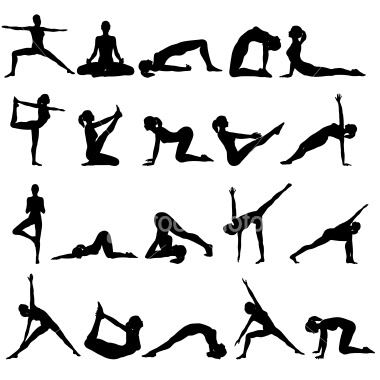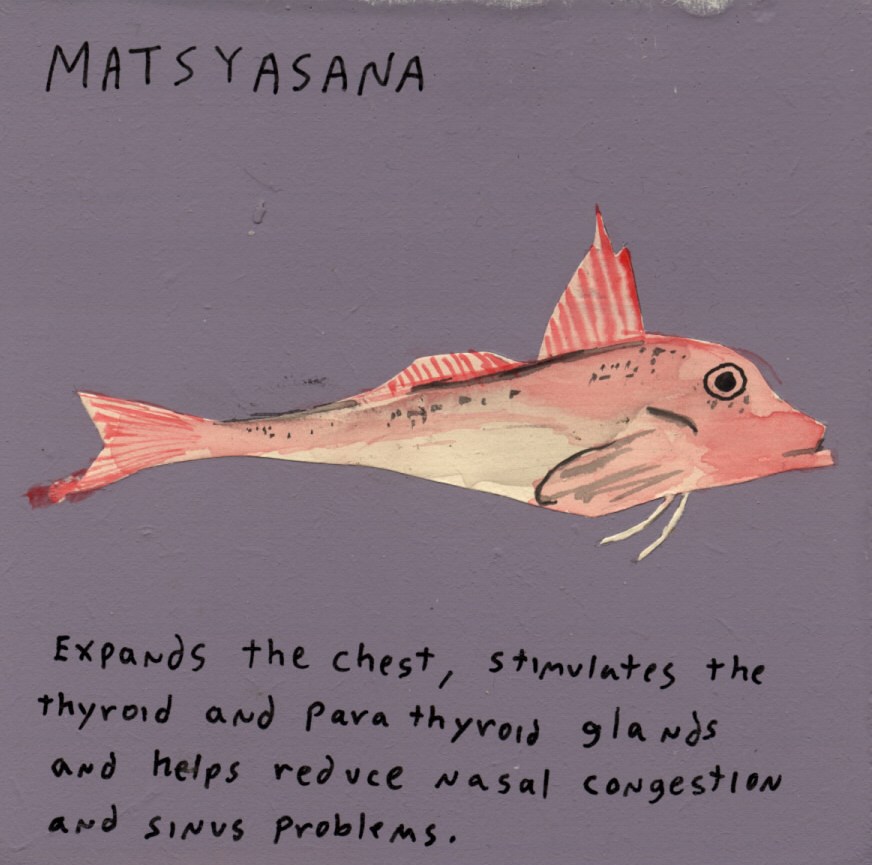People still look confused in class sometimes when I use yoga terminology. That’s why I started English Yoga terminology Tuesday. I guess I could always just use plain English in order to avoid these confusing moments, but as a person who enjoys looking up the etymology of words, how their meanings have evolved from what their original meanings were, and how words between different languages overlap- I would find it a shame not to introduce one of the oldest languages in the world in our classes (Sanskrit). So in this blog I would like to try and explain the meaning of one of the most common words used in my Berlin yoga classes. What is Pranayama?
Category: Uncategorized
What is the point of yoga- Yoga Styles Explained Part 2
 Many people wonder, “Why should I do yoga?” And while this is an individual question, I think it’s important to understand what the point of the practice is before deciding to make it a part of your life.
Many people wonder, “Why should I do yoga?” And while this is an individual question, I think it’s important to understand what the point of the practice is before deciding to make it a part of your life.
In my last blog about Hatha yoga in Berlin, I talked a bit about the current “trendy nature” of yoga and why there seem to be so many yoga styles on offer. But the true goal of Yoga is to bring the practitioner into a state of perfect peace with themself and with the world. This cannot be achieved overnight. And so, to approach this goal, one spends a lifetime practicing this discipline. Although perfect peace is the most difficult state to attain, it is said that everyone can approach it through a sincere practice of yoga.
As mentioned in my previous blog, originally there were four different types of yoga created. These different types were created so that people were able to practice the kind of yoga that best fits them as an individual. The four original yogas are: Njana Yoga, Karma Yoga, Bhakti Yoga and Raja Yoga.
The Njana yoga practitioners use the intellect to attain a state of inner peace. Their whole practice is about analyzing the world around them, and distinguishing what is real from illusion. This yoga is the best kind for people who have a need to intellectualize everything about the world.
The Karma Yoga practitioners strive to attain the inner peace state through action (Karma being the Sanskrit word for “action” or “to do”). Their practice is based on taking positive action without being attached to the fruits of one’s deeds. This kind of yoga is best for those who need to live an active life and keep themselves constantly busy.

The Bhakti Yoga practitioners use their emotions in order to attain their yogic goal. Bhakti is the yoga of devotion. This kind of yoga is said to be the best for people who are of an emotional nature and need to sublimate their emotions in order to attain inner peace. This yoga would concentrate on rituals, symbols, chanting. It is said that by doing so the practitioners channel their emotions to a higher state of being.
Raja yoga practitioners try to attain peace through meditation. But in order to sit down and meditate one must not only learn how to control the mental fluctuations but also to have a fit body that can manage to sit motionless with no pain for an hour. To be able to do the latter Hatha Yoga was created. This is the only type of yoga from the original ones that focuses on the physical body. I teach this kind of yoga because it addresses the body, mind and energy levels of the practitioner throughout his/her self-exploration towards inner peace.
What is Hatha Yoga- Yoga Styles Explained Part 1
 Today it is very common to hear about many different kinds of yoga in Berlin. And with so many variations to choose from, it can get rather confusing. In truth, there were originally only 4 types of yoga: Njana Yoga, Karma Yoga, Bhakti Yoga and Raja Yoga. These yogas were created so that people could practice the kind of yoga that was most attune to their own character.
Today it is very common to hear about many different kinds of yoga in Berlin. And with so many variations to choose from, it can get rather confusing. In truth, there were originally only 4 types of yoga: Njana Yoga, Karma Yoga, Bhakti Yoga and Raja Yoga. These yogas were created so that people could practice the kind of yoga that was most attune to their own character.
My Hatha yoga in English classes stem from the original Raja Yoga style. Raja yoga focuses on controlling the waves of thought by turning our mental and physical energy into spiritual energy. The purpose of Raja Yoga is to attain inner peace through meditation. In order to do this one must gain control over the physical body and prana (or vital energy), so that meditation can happen naturally. Raja Yoga consists of eight steps. The third step (Asanas) and the fourth step (Pranayama) is what makes up Hatha Yoga. This is the only kind of yoga that actually deals with the body and the one that most westerners think of when the word yoga is mentioned.
All of the yoga styles that have to do with physical and mental control stem from Hatha Yoga. The kinds of yoga we hear about today in the Berlin studios around us have much more to do with marketing then with providing separate types of yoga. These types and names are more of a description of the teaching method. For example a Vinyasa flow class will concentrate more on teaching the asanas with a flow rather than remaining static in them. Power yoga teaching will work to make you sweat. Hot yoga will teach yoga in a (very!) hot room. And the list continues with no end. Last year, I even heard of bicycle yoga! After trying to figure out how such yoga would work and picturing headstands being performed on the saddle of a bike, I discovered that it was about riding bikes out to different places, getting off the bike and then practicing yoga. I must say that I was relieved!
Berlin Yoga: Terminology Tuesday
 apes and sizes. Everything from the truly devout practices to the trendy, cult-like fashion of yoga- there are many styles and many different kinds of people practicing. Because there are so many people from all over the world who currently find this amazing city to be their home, we specialize in teaching Yoga in English. And because we believe that it can actually change lives, we teach the practices of Hatha Yoga and Vinyasa Yoga.
apes and sizes. Everything from the truly devout practices to the trendy, cult-like fashion of yoga- there are many styles and many different kinds of people practicing. Because there are so many people from all over the world who currently find this amazing city to be their home, we specialize in teaching Yoga in English. And because we believe that it can actually change lives, we teach the practices of Hatha Yoga and Vinyasa Yoga.
Berlin Yoga: Terminology Tuesday
As a teacher of Hath a Yoga in Berlin, I often use Sanskrit words in our classes when wanting to describe a pose or the reason behind something we are supposed to do. I try to always accompany these words with a translation, but every now and then I still see confused faces looking up at me. I realize that sometimes, especially when teaching yoga in English, it is important to not only describe the action in Sanskrit but to also offer a translation in plain English.
a Yoga in Berlin, I often use Sanskrit words in our classes when wanting to describe a pose or the reason behind something we are supposed to do. I try to always accompany these words with a translation, but every now and then I still see confused faces looking up at me. I realize that sometimes, especially when teaching yoga in English, it is important to not only describe the action in Sanskrit but to also offer a translation in plain English.
No matter how long you have taken yoga classes or how deep you are in your own personal practice, it’s important to understand the words being used over and over again. In an effort to explain the terms that many Berlin Yoga teachers (myself included) often take for granted that their students already understand, I am starting something I call Berlin Yoga: Terminology Tuesday. Each week we will be posting info about a term to help increase depth of understanding within your practice.
Perhaps the beginning is the best place to start….
Yoga: yolk (as in the yolk of an egg.)
The yolk of an egg has the capacity to bind ingredients together. Yoga also strives to bind or unite the three a spects of the self: the body, the mind and the soul. Over the centuries, it has become common for people to also translate the word yoga as “union”. And since the practice of Yoga affects people in so many different ways, the definitions of Yoga seem to be multiplying as yoga spreads throughout the world.
spects of the self: the body, the mind and the soul. Over the centuries, it has become common for people to also translate the word yoga as “union”. And since the practice of Yoga affects people in so many different ways, the definitions of Yoga seem to be multiplying as yoga spreads throughout the world.
What is a Sankalpa?
As an instructor of yoga in Berlin, I am often asked about the various parts ofthe practice I teach. One of the most recent questions was one coming from a new student in my Hatha yoga in English class. She asked. “What is a Sankalpa?”
Changing your life starts with setting the right intention. A Sankalpa is a very powerful tool that can help do just that.
Sankalpa is a Sanskrit word meaning resolve or resolution. It is a short, positive phrase that we use in order to build up an aspect of our character that needs strengthening. Take, for example, a person who wants to stop smoking. This person can very well understand all the reasons to stop smoking and even agree that being a non-smoker would be best for their health. But this understanding and agreement would be coming at the level of the intellect which is ruled solely by the conscious mind. And that is often not strong enough to take lasting action. By using the Sankalpa during relaxation, we have better access to the subconscious and have it work together with our conscious mind towards a common goal. This way the change that the Sankalpa brings into our lives is a more whole and permanent one.
My Berlin yoga class includes 70 minutes of positions and 20 minutes of relaxation and visualization in which we introduce aspects of yoga Nidra (conscious deep sleep). As we relax after yoga, we let go of our defenses, we become more vulnerable and the subconscious becomes more sensitive and receptive. That is the moment that we repeat our Sankalpa. When we first create our Sankalpa, we are planting a seed in our subconscious. Every time we go back to it and repeat it in our relaxed state, it is as if we were going back to it and watering it, caring for it so one day we can reap its fruits. For this reason, we keep the same Sankalpa until it becomes a reality in our lives.
3 New Classes beginning from Wednesday the 18th of April!!!
Hello everybody,
I am pleased to announce that the yoga fun is growing! We are now two teachers who make up Yoga Xkoelln: Meg and Pinelopi.
And we will be opening 3 new classes on Wednesday mornings. They will be on Görlitzerstr 39 and will have plenty of space available.
We will offer free classes on Wednesday the 18th of April so that you can try out!
Hope to see you there soon!
And for those of you who celebrate Easter, have a beautiful one!
Mini DETOX retreat
Happy New Year!
Happy new Year everybody! May all your dreams come true and may 2012 be a year full of well-being!







